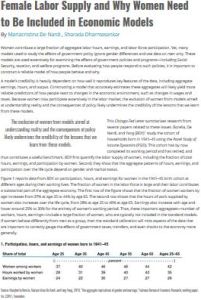
Recommendation
In the United States, women make up 49% of the workforce, contribute 44% of hours worked and take home 37% of income. Yet they’re missing from most economists’ modeling of labor markets and therefore from considerations of social, educational and labor policies. According to economists Mariacristina De Nardi and Sharada Dharmasankar, standard models are too distorted to accurately assess the impacts of wide-ranging government programs and overall economic disruptions on female workers. getAbstract recommends this insightful study to economists, public officials and business executives of all genders.
Summary
About the Authors
Mariacristina De Nardi is a senior economist at the Federal Reserve Bank of Chicago, where Sharada Dharmasankar is an associate economist.









Comment on this summary